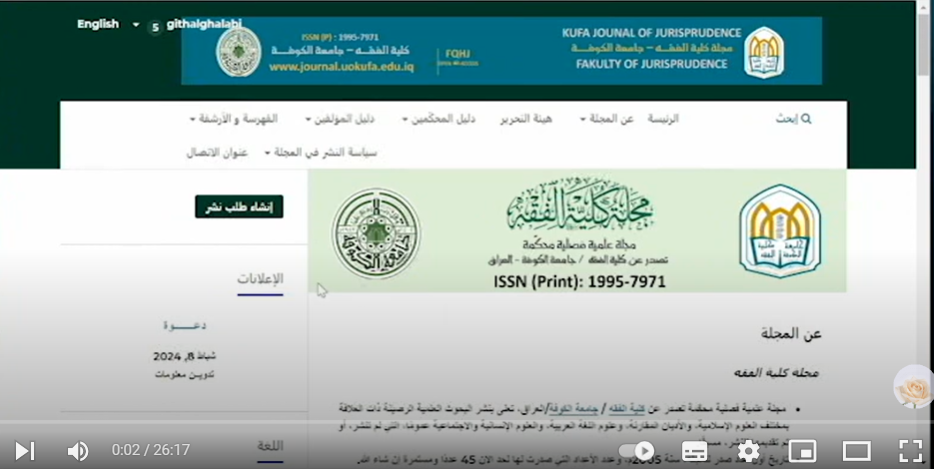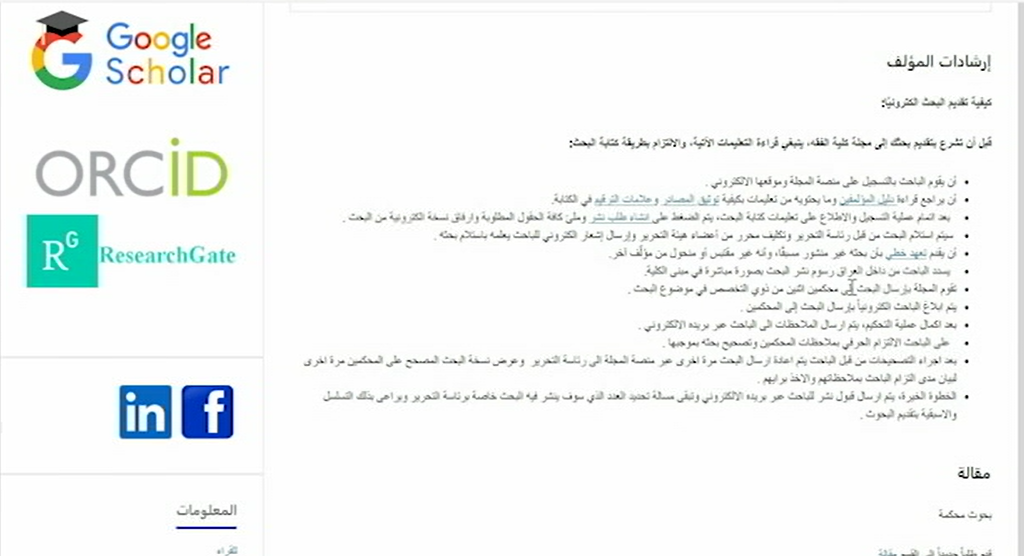سورة ابراهيم في القرآن الكريم
الملخص
Abstract
Great thanks for Allah and praying and peace upon our prophet Mohammad (Peace Be Upon Him)
In order to know the linguistic issues in this sura, we divided this research into five chapters followed by conclusion; the conclusion contains the most important results.
We started our research with the phonetic level and studied assimilation and simile in the separated speech. Then we studied the alteration and finally we ended with omission.
The second level was the morphological level. In this level, we studied the all types of verbs like the transitive (mono, die …etc), derivational verbs (the verbs which derived from adjective, nominal agentis. In addition all types of plural were studies in this level.
The third level is the grammatical level. We explained the predicate and compositional styles like negation, Interrogation, exclamation and condition. We explained the most important particles in this sura.
The fourth level was about the rhetorical level in Ebraheem Sura, which includes some types of rhetoric like omission, metaphor, antithesis, metonymy, contrast and we ended this level with invocation of Allah.
The fifth level was semantic level. This level included the significant of advancing and delaying of subjects and objects and some other forms. Then the significant of repetition in addressing and we ended this level with invocation to Allah.
We tried to study this sura rhetorically by using some grammatical references and sources and books of explanation and rhetoric books like Sibawayeh book and Al-Khasa'es book for Ibn Jeny, Dala'el Al-E'ejaz for Al-Jerjany, Al-Kashaf for Zamakhshary and other books.
The most important results from the linguistic study are: -
1- There is a clear harmony in the subjects of this Sura. The Sura dealt with the grace of belief in Allah and the unbelief in Allah; these two images can be seen clearly in two models. The first knew the grace of Allah. The other model didn’t know the grace of belief. The prophet Ebraheem represented the first model. That is why the name of Sura is Ebraheem because he was best model for any one appreciates the grace. The other didn’t belief in Allah and this was a curse for him and this is the main aim of the Sura.
2- Any one studies the verbs in this Sura; he can notice that the verbs are in different tenses. The present tense mentioned in this Sura about 91 times. The past tense verbs mentioned in this Sura about 85 times, the command verbs mentioned in this Sura about 15 times. All this because the present tense verbs represent the meaning of happening, renewal and the circumstantial expression or phrase.
3- The text in Koran used the derivations to explain a different meaning in each time. This meaning can be specified by the context. The infinitive is largely used in this Sura, it was mentioned 80 times. The attribute used her 25 times. Active participle used 12 times. The form of hyperbole used 10 times.
4- We can feel the accuracy of use for the sentence and word in Holly Koran. Each word has it own meaning, its rules in the sentence. The Koran uses the word once as singular then uses the same word in plural. The broken plural used about 34 times. The masculine and feminine plural used about 14 times for each.
5- Through the grammatical study for the Sura; we can notice that Koran used interrogative particle (Hamza and Hal) and the interrogative particle (Kayf (HOW), MA (WHAT)) in different portions. The Hamza was the highest and it was used 6 times. The use of Hamza coordinates with the Arabic styles in believing in negation and approval, exclamation and denying … etc. The use of Kayf mentioned twice. (Ma and Ma) once. The research dealt with negative (LA) and it was used 3 times. The negation style in the text of Koran used many time; like (MA) used 7 times, (LA) 9 times, (Lema) 5 times and (AN) 3 times.
Also, we noticed that there are a strong relation between the condition and its answer. At the beginning the condition started with word of condition then by apocopate the present and past verbs in condition and in answer. The conditional particle (AN) used 5 times, (MAN) 2 and (LEU) used 1 in this Sura.
6- The main style of the Sura was the direct speech and taking care for the psychological condition of the addressee, especially in addressing Musa for his tribe and when he reminded them in their state in lowness, enslavement, violence from Pharaoh. So, the direct speech used her to listen and to contemplate and distinguish right from wrong.
7- The Sura depended on the remote style in reminding the old tribes and how they didn’t believe their prophets at their times.
8- The Sura depended on simile in clarifying the image of belief like good tree, its origin is in earth and its top is in the sky and stable, while the tree of unbelief is like bad tree which does not last long.
9- The Sura explained the two contracted images the good and the evil by using the mentioned devices.
10- The rhyme of Sura is identical and we can see that the end of all verses of the Holy Koran in this Sura is identical.












